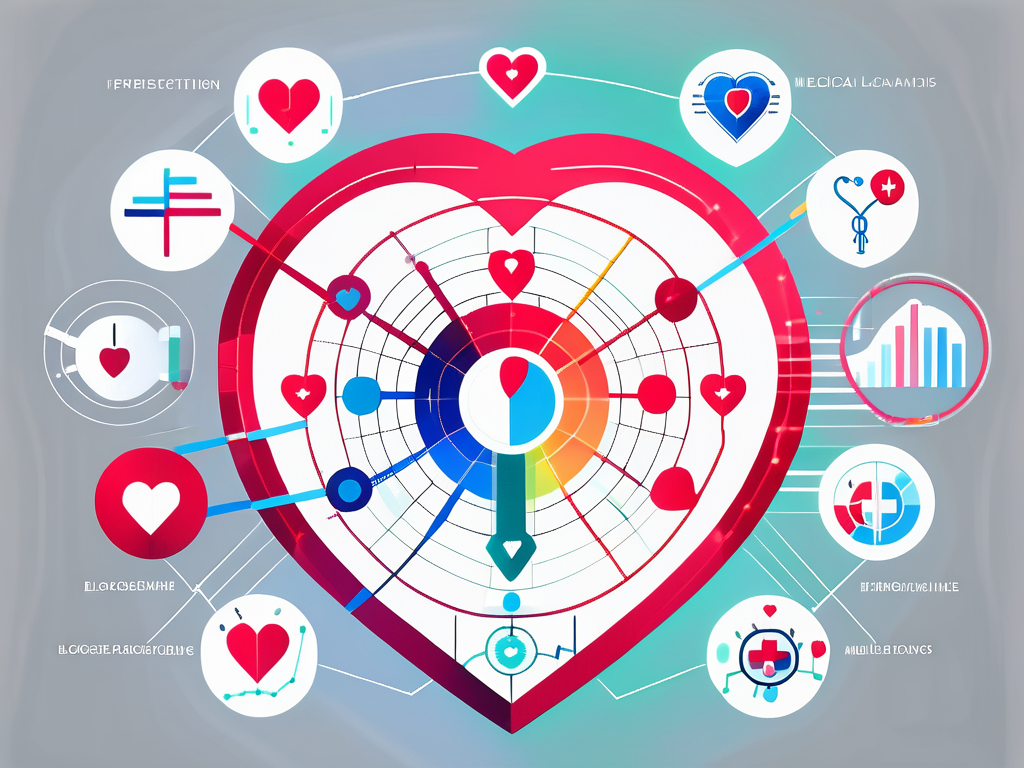Please note this is an advanced marketing topic. If you’re interested in some simpler ways to grow your practice, please browse the magazine for other articles, use the search box to find specific topics, or subscribe to receive very practical and easy to implement practice growth strategies every day for free.
—
Sentiment analysis, also known as opinion mining, is the process of analyzing text to determine the emotional tone behind it.
It involves using natural language processing algorithms to identify and extract sentiments expressed in written content, such as social media posts, online reviews, and patient feedback.
In the healthcare industry, sentiment analysis plays a crucial role in understanding and improving patient experiences, enhancing care delivery, and identifying areas for improvement.
Understanding Sentiment Analysis
Sentiment analysis encompasses various techniques and approaches to analyze textual data and categorize it into positive, negative, or neutral sentiments.
By examining the language, tone, and context of the content, sentiment analysis algorithms can determine the overall sentiment expressed in the text. This allows healthcare organizations to gain valuable insights into patient opinions and experiences.

Healthcare providers are increasingly turning to sentiment analysis to understand patient feedback and improve the quality of care. By leveraging advanced natural language processing techniques, sentiment analysis tools can sift through vast amounts of unstructured data, such as patient reviews and social media comments, to extract meaningful insights.
These insights can help healthcare organizations identify areas for improvement, monitor patient satisfaction levels, and enhance overall patient experience.
The Basics of Sentiment Analysis
The process of sentiment analysis involves several steps…
- The text is pre-processed to remove unnecessary noise, such as punctuation and stop words.
- The content is processed using machine learning or rule-based algorithms to classify the sentiment. These algorithms utilize sentiment lexicons, dictionaries, and machine learning models to assign sentiment scores or labels to the text.
- Sentiment analysis can be enhanced by incorporating advanced linguistic features, such as sentiment shifter words and modifiers, to capture the nuances of human expression accurately.
By considering the intensity and polarity of sentiments expressed in the text, sentiment analysis models can provide more nuanced insights into the emotional tone of the content.
The Role of Artificial Intelligence in Sentiment Analysis
Artificial intelligence (AI) plays a pivotal role in sentiment analysis. Machine learning algorithms enable sentiment analysis systems to improve over time by learning from large amounts of labeled data.
AI-powered sentiment analysis models can identify complex sentiments, detect sarcasm, and understand industry-specific language, making them highly effective in healthcare settings.
Moreover, AI-driven sentiment analysis tools can offer real-time monitoring of patient feedback across various digital platforms, allowing healthcare providers to promptly address concerns and enhance patient satisfaction.
By leveraging AI technologies, healthcare organizations can streamline the sentiment analysis process, gain actionable insights, and ultimately deliver better patient care.
The Intersection of Sentiment Analysis and Healthcare
Within the healthcare industry, sentiment analysis has numerous applications and benefits. By understanding patient sentiments, healthcare providers can personalize care, enhance patient engagement, and improve patient satisfaction.

Furthermore, sentiment analysis plays a crucial role in improving patient outcomes by helping healthcare providers identify trends and patterns in patient feedback.
This data-driven approach allows medical professionals to tailor treatment plans and interventions to meet individual patient needs effectively.
Enhancing Patient Care with Sentiment Analysis
Sentiment analysis enables healthcare providers to gain insights into patient experiences and identify areas for improvement. By analyzing patient feedback, hospitals and clinics can proactively address issues, refine healthcare practices, and enhance the overall quality of care.
Sentiment analysis can assist in predicting patient satisfaction levels and anticipating potential concerns before they escalate.
This proactive approach not only improves patient experience but also fosters a culture of continuous improvement within healthcare organizations.
Sentiment Analysis in Healthcare Administration
In addition to improving patient care, sentiment analysis can be utilized in healthcare administration.
By analyzing sentiments expressed by staff members or administrators, healthcare organizations can identify patterns, uncover employee satisfaction or dissatisfaction, and implement targeted interventions to enhance employee well-being.
Furthermore, sentiment analysis can be instrumental in optimizing operational processes within healthcare facilities. By analyzing sentiments related to workflow efficiency, resource allocation, and communication protocols, administrators can streamline operations, reduce costs, and improve overall organizational performance.
The Importance of Sentiment Analysis in Healthcare
Sentiment analysis plays a crucial role in healthcare for multiple reasons. It empowers healthcare providers with actionable insights, helps build patient-centered approaches, and contributes to the improvement of patient outcomes.
One significant aspect of sentiment analysis in healthcare is its ability to enhance the communication between patients and healthcare providers. By analyzing the sentiments expressed in patient feedback, healthcare organizations can gain a deeper understanding of patient needs, preferences, and concerns.
This, in turn, allows providers to tailor their services to meet the specific requirements of each individual, ultimately leading to higher patient satisfaction and better health outcomes.
Improving Patient Satisfaction with Sentiment Analysis
Patient satisfaction is a key indicator of the quality of care provided. Sentiment analysis enables healthcare organizations to measure patient satisfaction levels, identify factors influencing satisfaction, and make data-driven improvements to enhance patient experiences.
Moreover, sentiment analysis can also help healthcare facilities in proactively addressing potential issues before they escalate. By monitoring and analyzing sentiments in real-time, providers can quickly identify areas of concern and take immediate actions to resolve them, thereby preventing negative experiences and ensuring continuous quality improvement.
Predictive Power of Sentiment Analysis in Healthcare
Beyond measuring patient satisfaction, sentiment analysis can also predict future trends and outcomes.
By analyzing sentiments expressed in healthcare data, sentiment analysis models can provide valuable insights that help healthcare providers anticipate and address emerging challenges or opportunities.
Furthermore, sentiment analysis can assist in enhancing the overall patient engagement and experience. By understanding the emotions and opinions of patients expressed in their interactions with the healthcare system, providers can personalize their care plans, offer additional support where needed, and create a more empathetic and patient-centric environment that fosters trust and loyalty.
Challenges and Opportunities in Healthcare Sentiment Analysis
While sentiment analysis offers great potential in healthcare, it also comes with its own set of challenges. Overcoming these obstacles is essential to fully leverage the benefits of sentiment analysis and improve healthcare outcomes.

Overcoming Obstacles in Implementing Sentiment Analysis
Implementing sentiment analysis in healthcare requires addressing challenges such as data privacy concerns, understanding complex healthcare language, and ensuring accurate sentiment classification. Overcoming these obstacles involves collaboration between healthcare professionals, data scientists, and technology experts to develop robust sentiment analysis models.
Data privacy concerns are a significant challenge in implementing sentiment analysis in healthcare. Patient information is highly sensitive and must be protected to comply with privacy regulations. Healthcare organizations need to ensure that sentiment analysis models are designed in a way that respects patient privacy and maintains data security.
Another obstacle is understanding the complex language used in healthcare. Medical terminology, abbreviations, and jargon can make sentiment analysis more challenging. Sentiment analysis models need to be trained on healthcare-specific language to accurately interpret and classify sentiments expressed in patient feedback, reviews, and social media posts.
Ensuring accurate sentiment classification is crucial for the success of sentiment analysis in healthcare. Sentiment analysis models need to be trained on a diverse range of healthcare data to capture the nuances and variations in sentiment expressions. This requires access to large and diverse datasets that represent different patient populations, healthcare settings, and cultural contexts.
Future Prospects of Sentiment Analysis in Healthcare
The future of sentiment analysis in healthcare looks promising. As technology advances and sentiment analysis models become more sophisticated, the applications of sentiment analysis in healthcare will expand. From real-time patient sentiment monitoring to sentiment-based personalized medicine, sentiment analysis has the potential to reshape the healthcare landscape.
Real-time patient sentiment monitoring can provide healthcare providers with valuable insights into patient experiences and satisfaction levels. By analyzing sentiments expressed in patient feedback, healthcare organizations can identify areas for improvement and implement targeted interventions to enhance care delivery. This can lead to improved patient satisfaction and better patient outcomes.
Sentiment-based personalized medicine is another exciting prospect for sentiment analysis in healthcare. By analyzing patient sentiments, healthcare providers can gain a deeper understanding of individual patient preferences, needs, and expectations. This information can be used to tailor treatment plans, medication choices, and healthcare interventions to meet the unique needs of each patient, ultimately leading to more personalized and effective healthcare.
Wrapping up, sentiment analysis is a powerful tool that enables healthcare organizations to gain insights into patient experiences, enhance care delivery, and improve patient satisfaction.
By leveraging natural language processing and artificial intelligence techniques, healthcare providers can harness the predictive power of sentiment analysis to anticipate patient needs and deliver patient-centered care. While challenges exist, the opportunities for sentiment analysis in healthcare are vast, promising a future where patient sentiments shape the course of healthcare practices and innovations.
—
As a CAM practitioner or clinic owner, staying ahead in the healthcare industry means understanding the nuances of patient sentiment and leveraging them to grow your practice. Join the Wellth Daily community and subscribe to our free newsletter for daily insights that go beyond word-of-mouth. In just 2 minutes a day, you can learn proven strategies to attract more clients and enhance patient care. Plus, you’ll gain access to our exclusive, beautifully designed clinic resources to help your practice stand out. Subscribe FREE today and start transforming patient sentiment into practice success.
